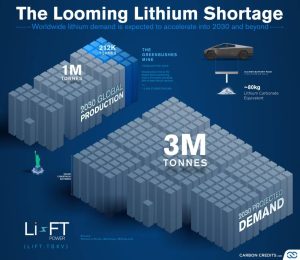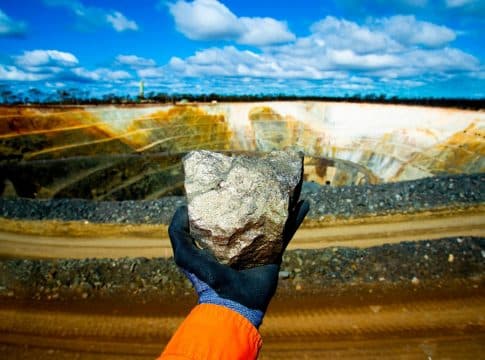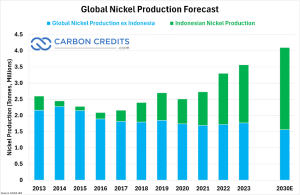Constellation and Calpine’s $16.4B Deal Boosts U.S. Clean Energy Transition
Constellation, the biggest clean energy provider in America announced to acquisition of Calpine Corp. The deal, worth $16.4 billion, involves cash and stock. This strategic merger will combine Constellation’s leadership in emissions-free electricity with Calpine’s extensive portfolio of low-emission natural gas, renewable energy, and its massive geothermal operations.
This is how they plan to create America’s largest clean energy provider in the U.S., serving 2.5 million customers nationwide. Furthermore, Constellation will offer innovative energy solutions to reduce costs and support America’s sustainability goals.
Constellation’s Big Bet on Calpine: Earnings Boost and Expansion
The press release revealed that Constellation will buy Calpine with 50 million shares, $4.5 billion in cash, and by taking on $12.7 billion of its debt. The total cost, after considering Calpine’s cash flow and tax benefits, is $26.6 billion. This makes the deal worth 7.9 times its 2026 earnings.
Additionally, Constellation’s shareholders will benefit significantly. They expect earnings per share to rise over 20% in 2026, adding at least $2 in future years. The acquisition will also bring in over $2 billion in cash each year, allowing strong reinvestment. Constellation aims for double-digit growth for the rest of the decade.
The deal should be finalized within a year, pending certain conditions and approvals. This includes the Hart-Scott-Rodino Act waiting period and clearance from various regulatory bodies. Major Calpine shareholders, like ECP, CPP Investments, and Access Industries, back the deal. They’ve agreed to hold their shares for 18 months.
After the deal, Constellation will stay in Baltimore and keep a strong presence in Houston, where Calpine is based.
Joe Dominguez, president and CEO of Constellation remarked,
“This acquisition will help us better serve our customers across America, from families to businesses and utilities. By combining Constellation’s unmatched expertise in zero-emission nuclear energy with Calpine’s industry-leading, best-in-class, low-carbon natural gas and geothermal generation fleets, we will be able to offer the broadest array of energy products and services available in the industry. Both companies have been at the forefront of America’s transition to cleaner, more reliable and secure energy, and those shared values will guide us as we pursue investments in new and existing clean technologies to meet rising demand. What makes this combination even more special is it brings together two world-class teams, with the most talented women and men in the industry, who share a noble passion for safety, sustainability, operational excellence and helping America’s families, businesses and communities thrive and grow. We look forward to welcoming the Calpine team upon closing of this transaction.”
Constellation’s Role in U.S. Carbon-Free Energy
Constellation is a key partner in the U.S. Department of Energy (DOE) and New York State Energy Research and Development Authority (NYSERDA) grants. Under this, the company focuses on clean energy technologies like direct air capture of CO2, long-duration energy storage, and clean hydrogen production.
Its diverse portfolio includes America’s largest nuclear fleet and other renewable resources like hydroelectric, wind, solar, natural gas, and oil. Some promising services include:
- Supplies 10% of America’s clean and carbon-free energy and nearly 90% of its annual output is carbon-free.
- Offers sustainable gas and carbon offset solutions, such as renewable natural gas (RNG) and carbon credits, to help retail gas customers meet their decarbonization goals.
Notably, Constellation Energy Solutions (CES) designs energy-efficient and renewable projects for commercial clients, including government and healthcare sectors. As per its sustainability report, in 2023, CES helped avoid more than 227,000 metric tons of CO2.
 Source: Constellation
Source: Constellation
- LATEST: Constellation Secures Groundbreaking $1 Billion Clean Nuclear Energy Deal with Federal Government
Calpine’s Decarbonization Strategy
Calpine plays a crucial role in providing clean, affordable, and reliable energy, generating 27,000 megawatts of electricity—enough to power 27 million homes. It also helps customers responsibly manage their energy use and guides them toward a low-carbon future.
Additionally, the company advocates a broad approach to tackling climate change, integrating renewable sources like solar and wind while ensuring reliable backup power to prevent blackouts and rising energy costs. Most crucial is its massive geothermal plant that ensures grid stability during peak usage
Calpine’s decarbonization strategy also focuses on:
- Expanding operations at The Geysers- the largest geothermal complex in the world
- Advancing battery storage and natural gas fleet
- Exploring more prospects for carbon capture technologies
 Source: Calpine
Source: Calpine
Building the Cleanest and Most Reliable Energy Portfolio in the U.S.
The combined energy portfolio will have nearly 60 gigawatts of zero- and low-emission power capacity. Jointly they plan to expand into Texas and other key states like California, New York, and Pennsylvania.
Constellation will further solidify its position by expanding its renewable energy portfolio. This includes acquiring Calpine’s Geysers facility in Northern California. Additionally, it will also advance its nuclear projects, invest in renewables, and increase nuclear output. One significant milestone is to restart the Crane Clean Energy Center in Pennsylvania.
All these prospects would subsequently increase cash flow and drive innovation and growth in clean energy across the U.S.
Combining Energy Excellence with Community Care
The merger brings together teams with a strong culture of safety, operational excellence, and customer service. Both companies are recognized for delivering reliable, cost-effective energy solutions.
Calpine’s natural gas plants will ensure grid reliability as customers shift to cleaner energy. Both companies have invested in carbon sequestration technology to support this purpose.
Apart from clean energy goals, both companies have plans to boost community development by creating jobs, paying taxes, and fostering growth. It will donate over $21.1 million each year and run volunteer programs in underserved areas.
Andrew Novotny, president and CEO of Calpine said,
“This is an incredible opportunity to bring together top tier generation fleets, leading retail customer businesses and the best people in our industry to help drive a stronger American economy for a cleaner, healthier and more sustainable future. Together, we will be better positioned to bring accelerated investment in everything from zero-emission nuclear to battery storage that will power our economy in a way that puts people and our environment first. It’s a win for every American family and business in our newly combined footprint that wants clean and reliable energy. ECP’s commitment to these goals over the last seven years was critical to the progress we have made as a company and to laying a foundation for future growth.”
Post-merger, Novotny will join Constellation, ensuring continuity and leadership for the combined business.
In conclusion, the partnership between Constellation and Calpine is set to strengthen the U.S.’s climate goals and support the objectives of the Paris Agreement. By combining resources and expertise, the two companies will create a powerful force in clean energy for a decarbonized future.
The post Constellation and Calpine’s $16.4B Deal Boosts U.S. Clean Energy Transition appeared first on Carbon Credits.





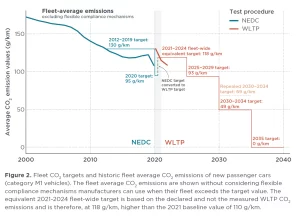
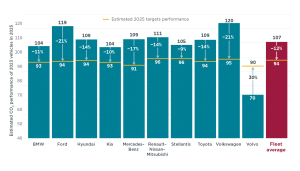



 source: NASDAQ
source: NASDAQ source: NASDAQ
source: NASDAQ source: NASDAQ
source: NASDAQ


 Source: ICCT
Source: ICCT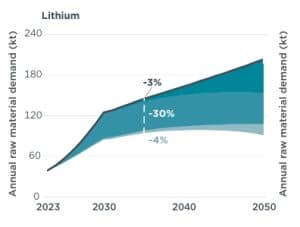 Source: ICCT
Source: ICCT